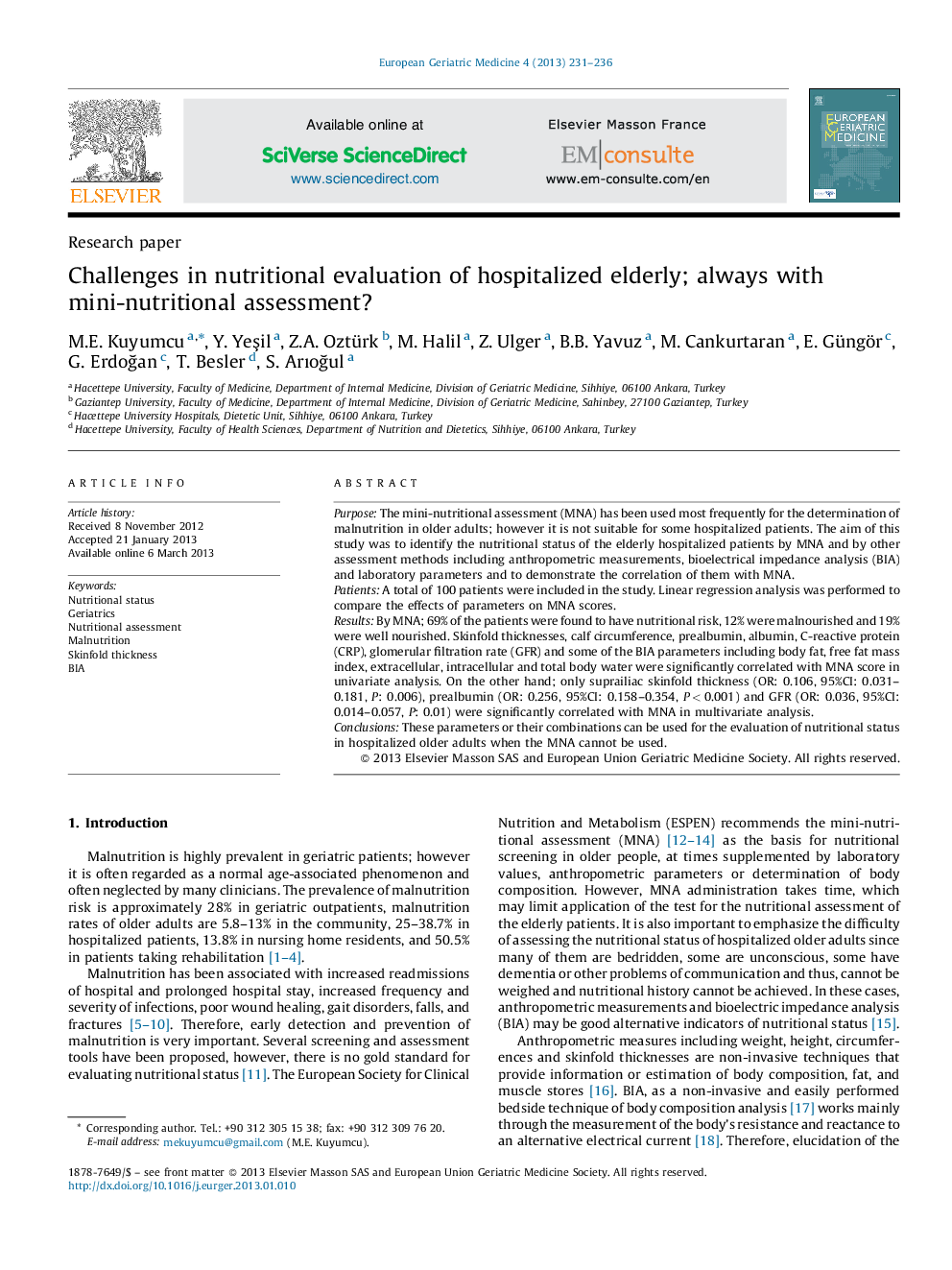| Article ID | Journal | Published Year | Pages | File Type |
|---|---|---|---|---|
| 3324740 | European Geriatric Medicine | 2013 | 6 Pages |
PurposeThe mini-nutritional assessment (MNA) has been used most frequently for the determination of malnutrition in older adults; however it is not suitable for some hospitalized patients. The aim of this study was to identify the nutritional status of the elderly hospitalized patients by MNA and by other assessment methods including anthropometric measurements, bioelectrical impedance analysis (BIA) and laboratory parameters and to demonstrate the correlation of them with MNA.PatientsA total of 100 patients were included in the study. Linear regression analysis was performed to compare the effects of parameters on MNA scores.ResultsBy MNA; 69% of the patients were found to have nutritional risk, 12% were malnourished and 19% were well nourished. Skinfold thicknesses, calf circumference, prealbumin, albumin, C-reactive protein (CRP), glomerular filtration rate (GFR) and some of the BIA parameters including body fat, free fat mass index, extracellular, intracellular and total body water were significantly correlated with MNA score in univariate analysis. On the other hand; only suprailiac skinfold thickness (OR: 0.106, 95%CI: 0.031–0.181, P: 0.006), prealbumin (OR: 0.256, 95%CI: 0.158–0.354, P < 0.001) and GFR (OR: 0.036, 95%CI: 0.014–0.057, P: 0.01) were significantly correlated with MNA in multivariate analysis.ConclusionsThese parameters or their combinations can be used for the evaluation of nutritional status in hospitalized older adults when the MNA cannot be used.
